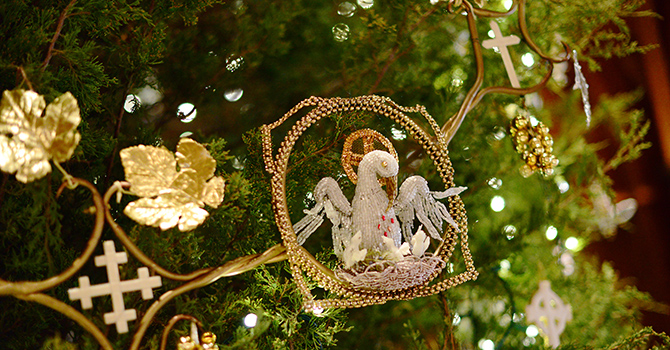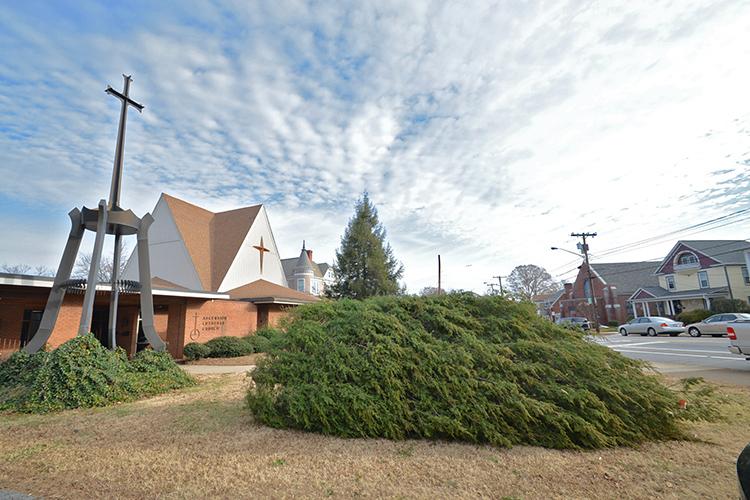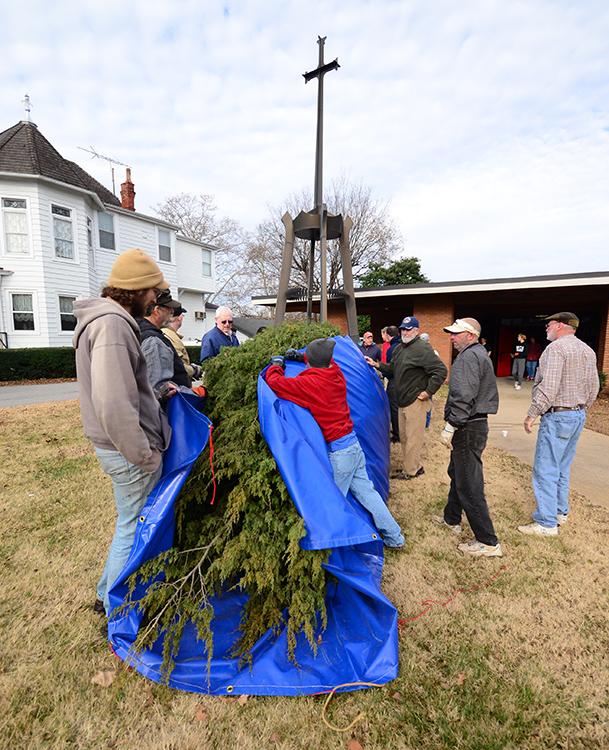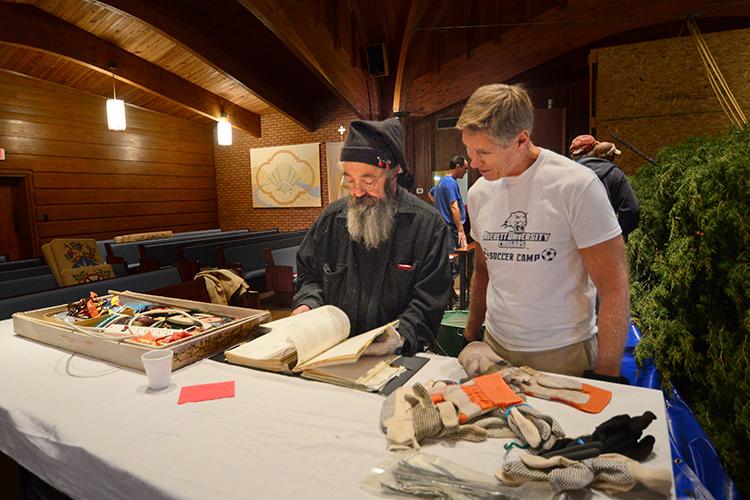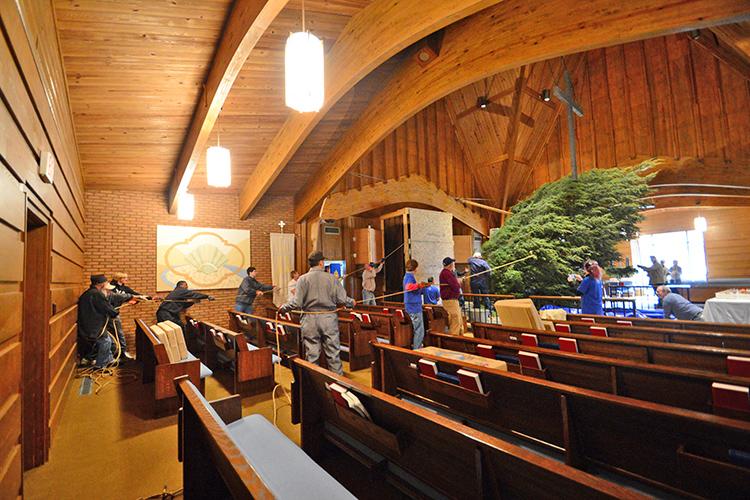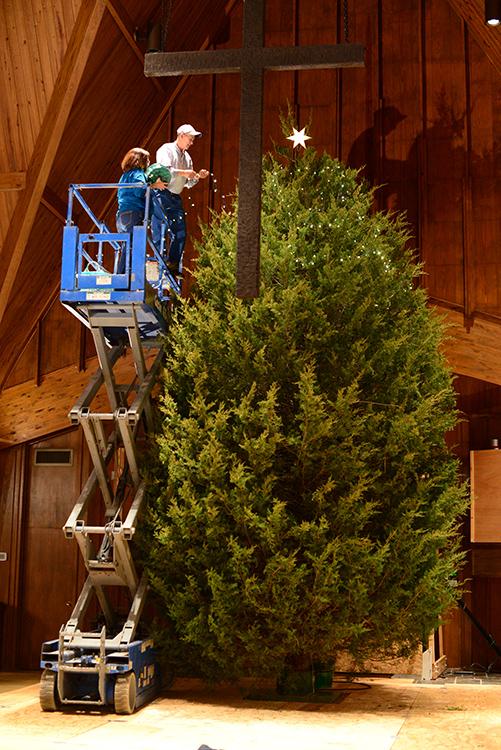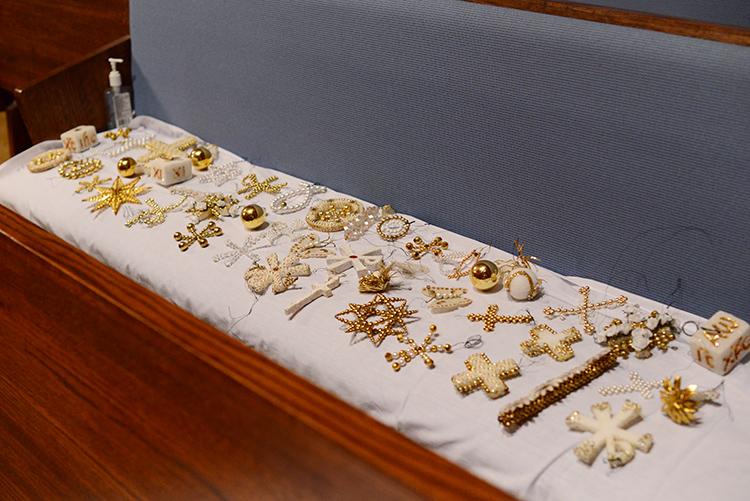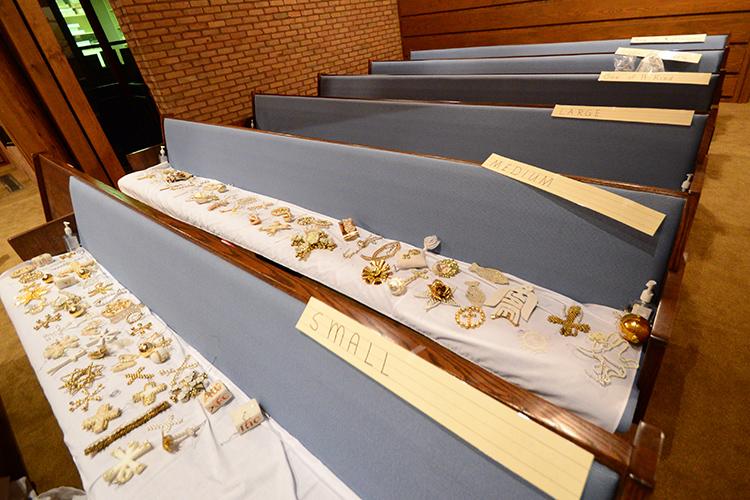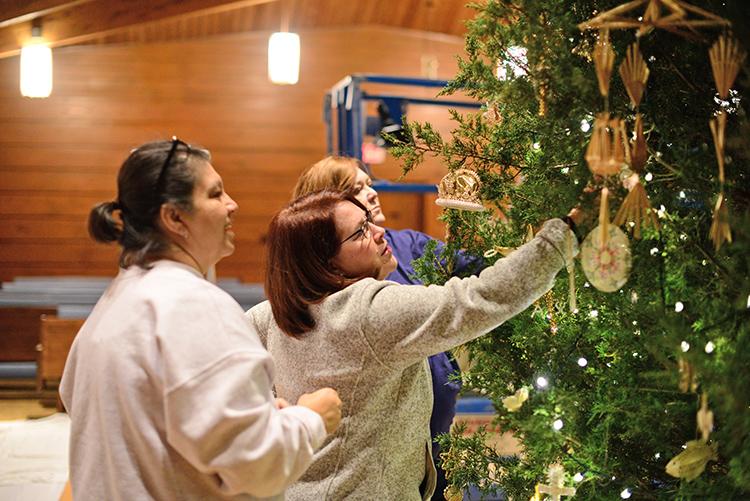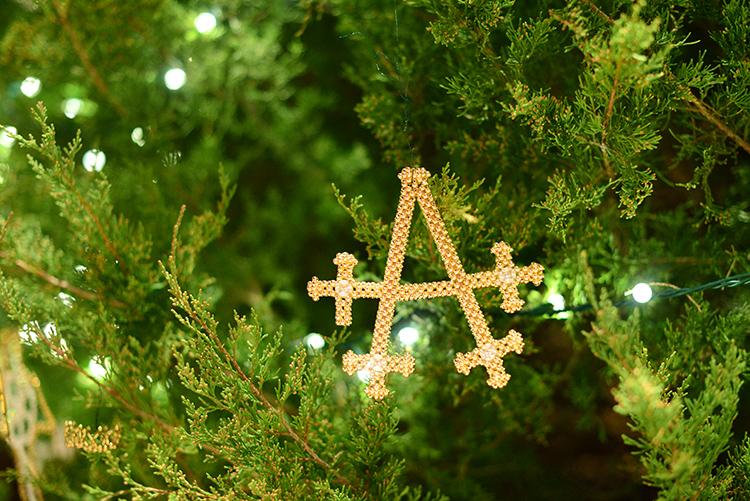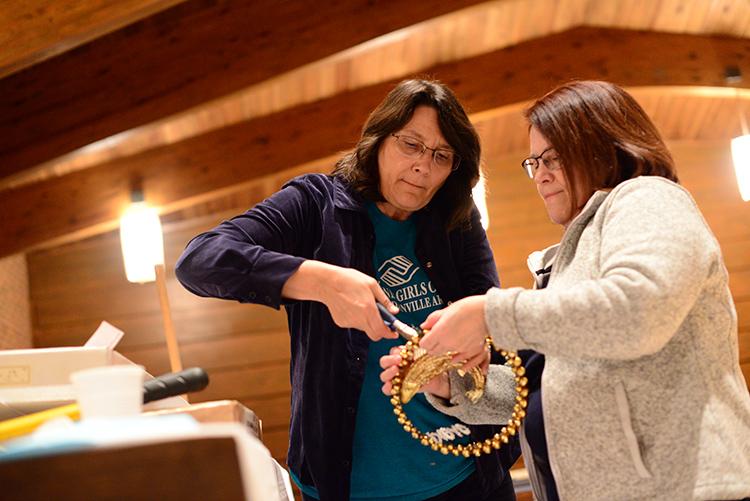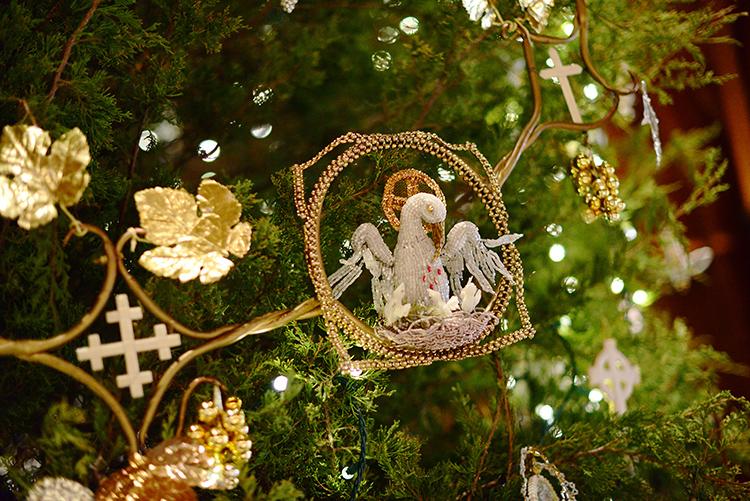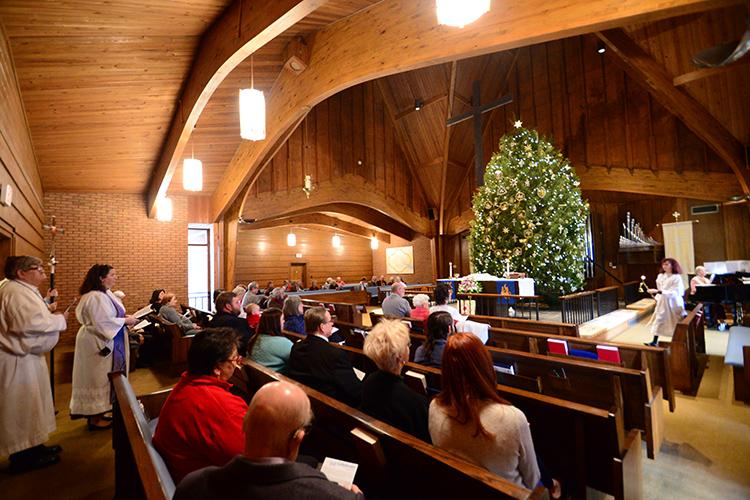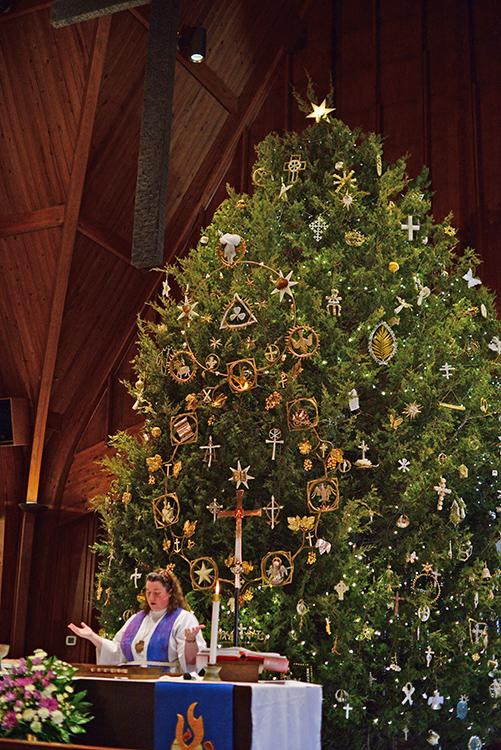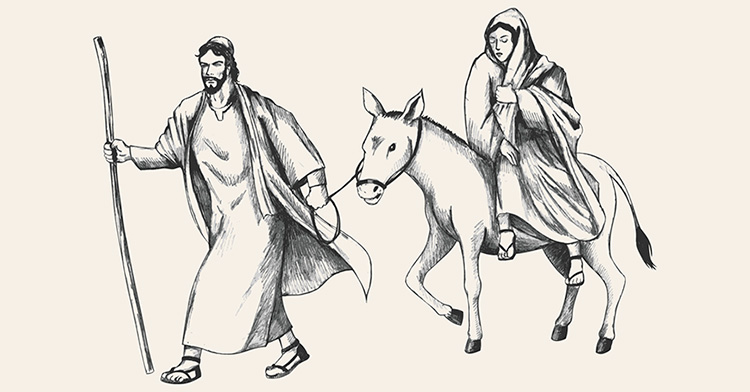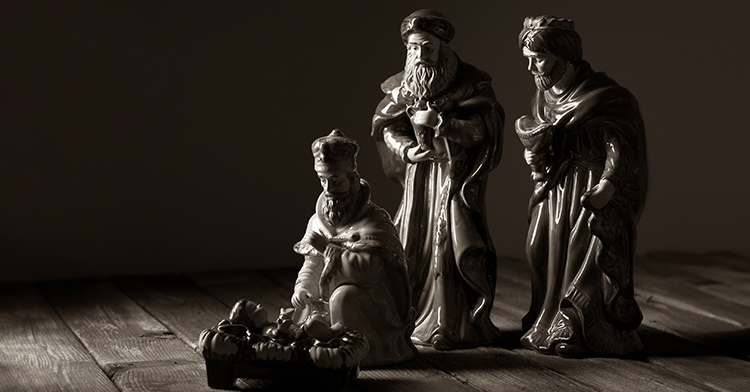I am a Lutheran. This means different things to different people. If you ask some, they will tell you that we are people who like posting notes on church doors with lots of drama. If you ask Garrison Keillor, we are people who like our Jell-O salad to match the color of the liturgical calendar.
If you ask my congregation, we are people who love Jesus and tell his story using beads and wire, glue and Styrofoam.
My congregation, Ascension Lutheran in Danville, Virginia, is the birthplace of Chrismons, the white and gold Christmas ornaments with Christian symbolism. Chrismons -- the word is a combination of “Christ” and “monogram” -- were first made by a member of our congregation, Frances Kipps Spencer, in 1957. This year marks the 60th time we have decorated a Chrismons tree.
That first year, working to prepare a Christmas tree for the sanctuary, Spencer created an ornament of the Greek capital letters Chi and Rho -- a monogram of Christos, the word for Christ in Greek. She went on to create many designs, and the Chrismons tree expanded to include other seasons as well.
The Chrismon tradition has spread across the globe, but it has a special meaning for our congregation. It has offered us opportunities for evangelism on a worldwide stage. It’s a vehicle for Christian education, financial stewardship, fellowship, and the practice of living and talking about our faith. It has allowed God to open us to our community and our world.
There’s something about art and spirituality that really does speak to the soul. And because this is the mother church of the Chrismons tradition, that is part of living here and growing here and coming to know God here.
This ministry is not just something we do; it is part of who we are. It’s the intersection of doing and being that we clergy try to describe to our communities of faith.
It has made this group of people -- who are so quiet that they don’t clap in worship but rather smile as loudly as they can -- become engaging, artful storytellers.
This gift has encouraged creativity, not just for those involved in the design and making of the ornaments, but for the entire congregation in finding ways to incorporate the gifts of all people into the ministry.
For us, it’s a year-round ministry. We hold regular workshops on making Chrismons, and we display them in our sanctuary throughout the liturgical year. We spend weeks in preparation for Christmas, when we bring in a giant tree and decorate it with large ornaments for public viewing.
Each of us can point to some part of the Chrismons ministry and find ourselves there. Each of us has invested in telling the story about Jesus, his life and teachings, his death and resurrection, and his continued presence with us.
It’s a point of pride. Even for the non-crafty, we each have a favorite Chrismon that speaks to us spiritually.
Maybe that Chrismon has a parallel in our own lives; maybe we watched our grandma make it. Maybe we made it in VBS as a child, or we love it because Dad made it even though he had to redo it three times.
Each of us here also has a Chrismons story to tell. Here’s mine: I came to Ascension as pastor 10 years ago. The first Chrismon I made was so difficult that I said church-inappropriate words and thought about losing my religion. (It was a complicated pattern that incorporated all the symbols of Christ in a wagon-wheel design.)
But sitting around the table with the other people, listening to the ladies tell stories about learning from their grandmas, who had learned from Mrs. Spencer, somehow it all worked out. And I stuck with it.
The experience was like marrying into a family and going to that first Thanksgiving dinner with them. Everyone sits around telling all the familiar stories, which you get to hear for the first time.
Eventually someone said, “This is hard,” and we laughed. Then we took a deep breath together.
Now when I see that Chrismon, I am reminded to keep going. It will all work out in the end; if it’s not OK, it’s not the end.
I could tell you more about Chrismons, their history and all their biblical explanations. I could tell you how we get the tree into the church (which is always a question I am asked).
But what I would rather tell you is that this last 60 years of creativity and crafting, engineering and commitment to talking about Jesus has shaped the corporate and individual identity of my congregation. We are people who love to tell the story of Jesus through Chrismons.
That is our evangelism, because there’s a theology to everything in this ministry. Everything is done for a reason, and -- although the ornaments are beautiful -- nothing is done just because it’s pretty.
Because we Lutherans are afraid of being judged Bible thumpers, we need a subtle way to break the ice and talk to others about our faith. We are too shy to knock on your door and ask whether you know who Jesus is, but we have no problem knocking and asking whether you would like to donate that 20-foot-tall cedar in your front yard to be this year’s Chrismons tree.
When you ask, “What’s that?” we’ll respond, “Let’s have some coffee,” and we will tell you.
We will tell you about the Chrismon we got when we joined the church and what that day was like for us. We will talk about the Chrismon we got at our baptism reminding us God chose us, and the one we received at confirmation when the Spirit stirred in us to respond to God’s love.
But most important, we will tell you how we have found a connection between our own lives and faith and the biblical stories told in the ornaments on the Chrismons tree.
This ministry has helped my congregation answer the questions, “Who are you?” and, “Whose are you?”
You cannot re-create this ministry at your congregation; you can, however, take it to a new generation. You can take its lessons of creativity, inclusive ministry and incorporation into all aspects of identity and find the parallel in your congregation.
You can join your story to Christ’s and ours and become storytellers with us -- perhaps with Chrismons, or with music or dance, or comedy, or whatever is your congregation’s special gift.
And you can say, “We are people who ...”

